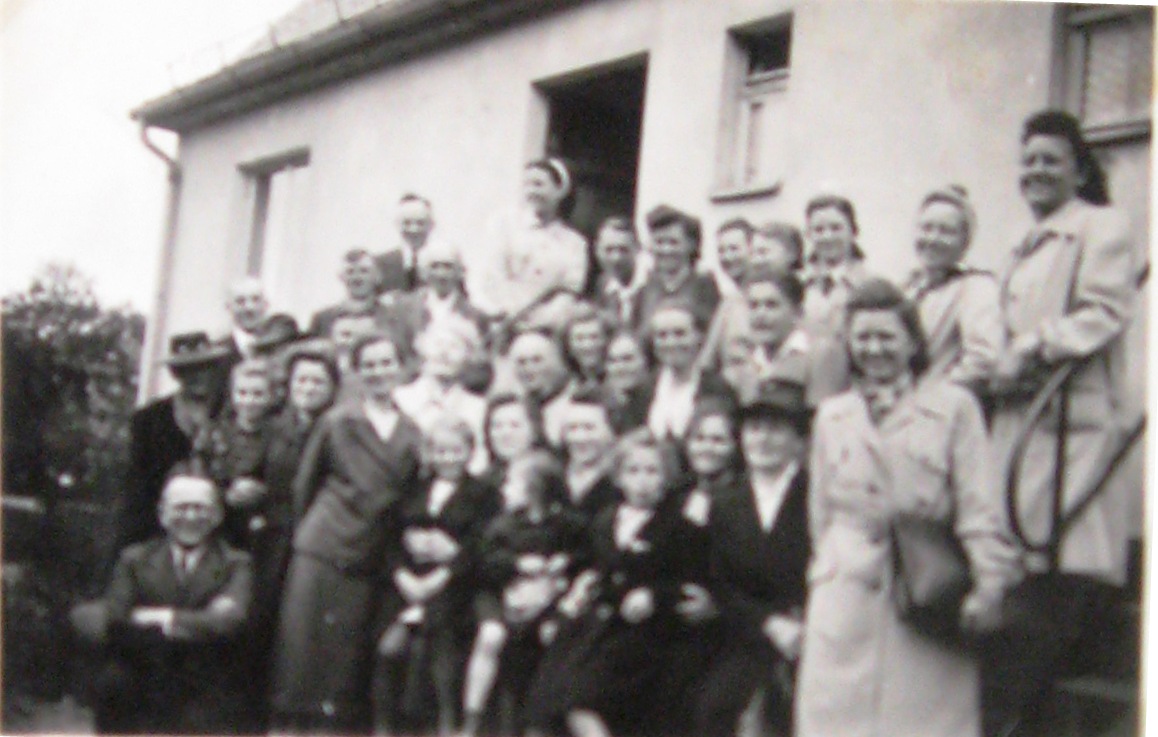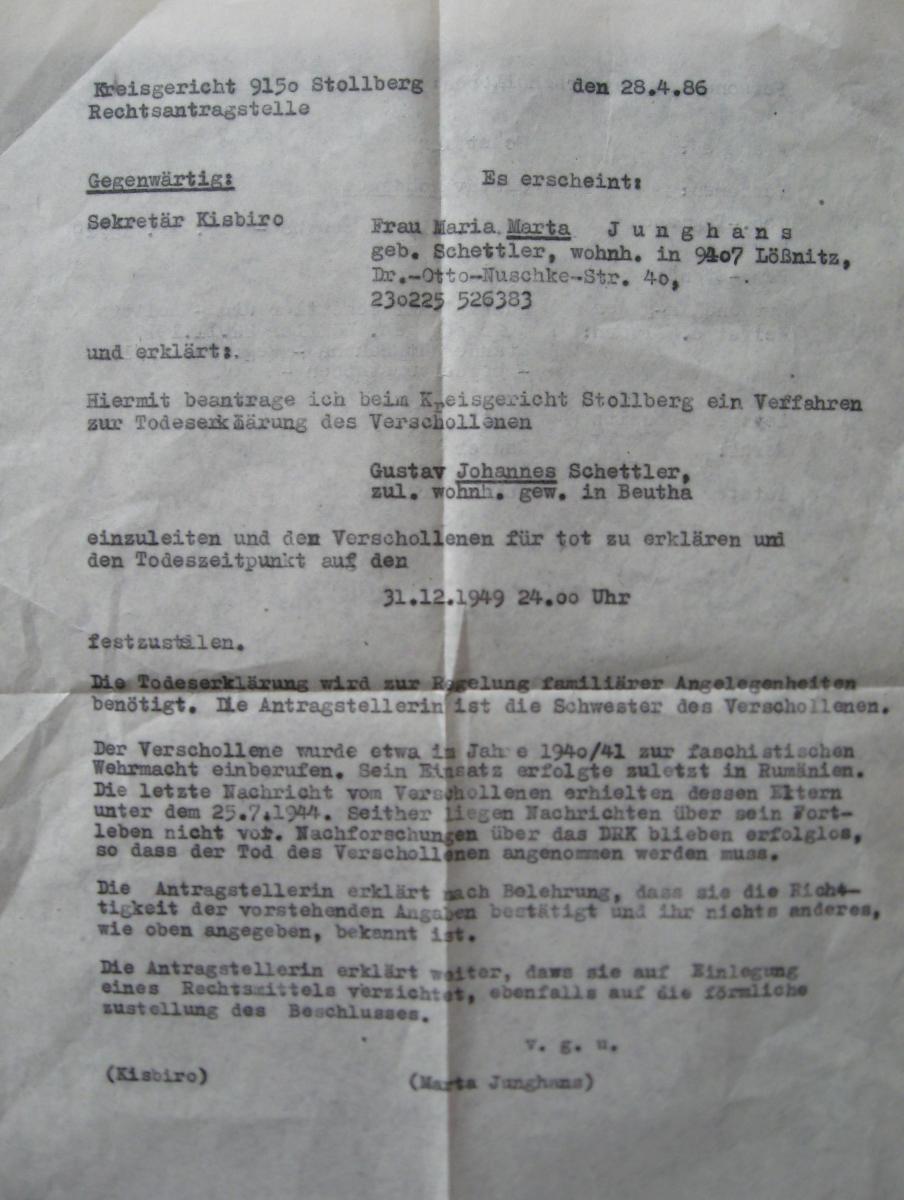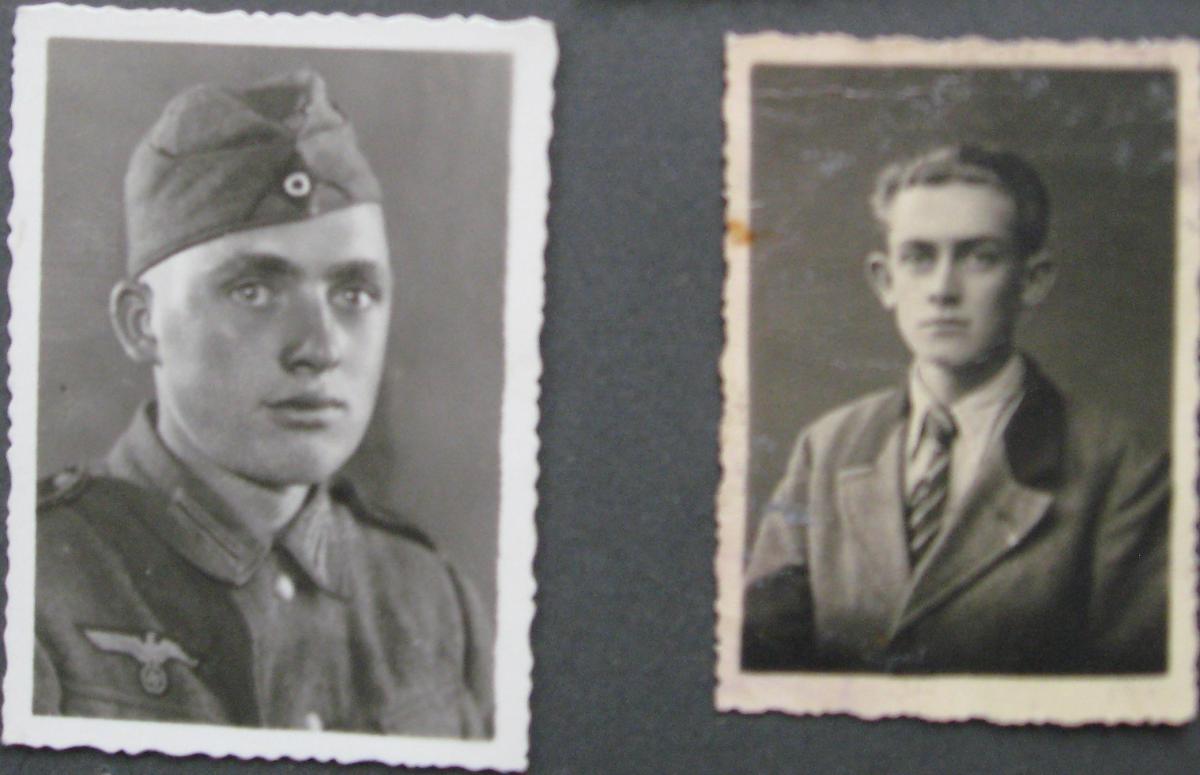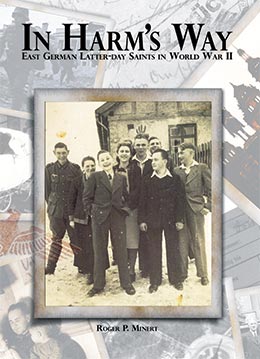Beutha Group, Zwickau District
Roger P. Minert, In Harm’s Way: East German Latter-day Saints in World War II (Provo, UT: Religious Studies Center, Brigham Young University, 2009), 482-3.
The group of Latter-day Saints holding meetings during World War II in the small community of Beutha in Saxony was comprised principally of two families: Schettler and Weinholdt. In this predominately Lutheran territory, the few members of The Church of Jesus Christ of Latter-day Saints were generally known and accepted. The meetings were held in the Schettler home on Hauptstrasse. Baptisms were conducted in a small pond just a few hundred yards from the Schettler home.
The history of the East German Mission contains but one entry regarding the Saints in Beutha, dated Friday, February 25, 1938: “The Beutha Branch gave an illustrated lecture, attended by fifteen persons.”[1] Some of those persons would have been friends, because there were not fifteen members of the Church in the village. The history does not identify the topic of the lecture, but the Book of Mormon and genealogy were the most popular themes for such events in the mission in those days.
 May 9, 1943 was a significant day in the Beutha Group: Sonja Weinholdt and Margarete Schettler were baptized by Elder Unger of the Zwickau Branch. (G. Schettler Sehm)
May 9, 1943 was a significant day in the Beutha Group: Sonja Weinholdt and Margarete Schettler were baptized by Elder Unger of the Zwickau Branch. (G. Schettler Sehm)
The only eyewitness for the Beutha group available for an interview as of this writing is Gertrude Schettler Sehm (born 1926). She made the following statements about life in Beutha and about the members of the group there just prior to and during World War II.[2]
We held Church once a month. The only meeting was sacrament meeting. Because my father was deceased and Mr. Weinholdt was not a member of the Church, a priesthood holder came from Zwickau to administer the sacrament to us. Sometimes a second brother came along, and we had a rare Sunday School meeting as well. My mother taught us the gospel in the home. She could sing well (we had the Church hymnal), and she told us stories from the Book of Mormon.
Sometimes we traveled to Zwickau to attend meetings, including Relief Society and MIA (we did not have those in Beutha). About ten to fifteen of us made the trip together. We walked about one hour, then took the streetcar to the Zwickau Branch meetinghouse. We always left very early in the morning and came back late at night, since they held meetings twice a day in Zwickau. We usually stayed with other members between meetings because we couldn’t go home yet.
My father was very much against the [National Socialist] system, so I didn’t participate in the Hitler Youth, nor did my brothers. He even locked my brothers in the house when it came time for the meetings so that they couldn’t go. Nobody reported us because the people in the villages outside of the big cities didn’t take these things very seriously.
Although we lived in a village, the war raged all around us. The airplanes didn’t drop bombs on us, but they did in nearby towns, and the air pressure broke windows in Beutha. There was a crater behind our house caused by an artillery shell. We hid in various places during the air raids, but our basement was the best place. One [neighbor] girl was killed when shrapnel flew through her window and hit her.
The Americans came through Beutha first, but they didn’t stop and didn’t bother us. The Russians came next, and they did go through our houses. German soldiers were in our home once, and that was dangerous. They brought lice with them.
There were food shortages during the war. I didn’t see any foreign foods like bananas. The local stores went out of business. To heat our home, we used what little coal was distributed and we gathered wood from the forest. When the Russians came, we didn’t dare collect wood in the forest because they were camped there.
Two of my brothers were killed on the Russian Front. For one of them [Emil Ernst], we received an official notice on July 24, 1944. We never found out what happened to my other brother, Hans Gustav. He was declared dead by a court order on December 31, 1949.
My mother never doubted the gospel—even when she found out that her two sons were dead. She always said that she was looking forward to seeing them again.
 Johannes (Hans) Schettler was reported missing in action in 1944. This 1986 letter officially established his death effective December 31, 1949—the date used for most missing soldiers in Germany. (G. Schettler Sehm)
Johannes (Hans) Schettler was reported missing in action in 1944. This 1986 letter officially established his death effective December 31, 1949—the date used for most missing soldiers in Germany. (G. Schettler Sehm)
Regarding life as a teenager during World War II, Gertrude made the following statement: “I was nineteen years old [when the war ended]. It should have been the most wonderful age for me, but under those circumstances, it was a disappointment.”
In Memoriam:
The following members of the Beutha group did not survive World War II:
Emil Ernst Schettler b. 28 Feb 1921 in Beutha, Zwickau, Sachsen; son of Gustav Emil Schettler and Melitta Freida Löffler; bp. 11 Oct 1931; non-commissioned officer; k. in battle Lemieszow, Russia 24 July 1944 (Schettler-Sehm; CHL CR 275 8 2458, p. 1522; IGI; AF; www.volksbund.de)
Johannes Schettler b. 23 Nov 1919 Beutha, Zwickau, Sachsen; son of Gustav Emil Schettler and Melitta Freida Löffler; bp. 4 Aug 1929; corporal; d. Romania aft 25 Jul 1944; officially declared dead 31 Dec 1949 (Schettler-Sehm; IGI; AF)
 Emil Ernst and Johannes Schettler were both casualties of the war. They are shown here in their sister’s photo album. (G. Schettler Sehm)
Emil Ernst and Johannes Schettler were both casualties of the war. They are shown here in their sister’s photo album. (G. Schettler Sehm)
Notes
[1] East German Mission History Quarterly Reports, 1938, no. 12, East German Mission History.
[2] Gertrude Schettler Sehm, interview by the author in German, Beutha, Germany, May 30, 2007; summarized in English by Judith Sartowski.
